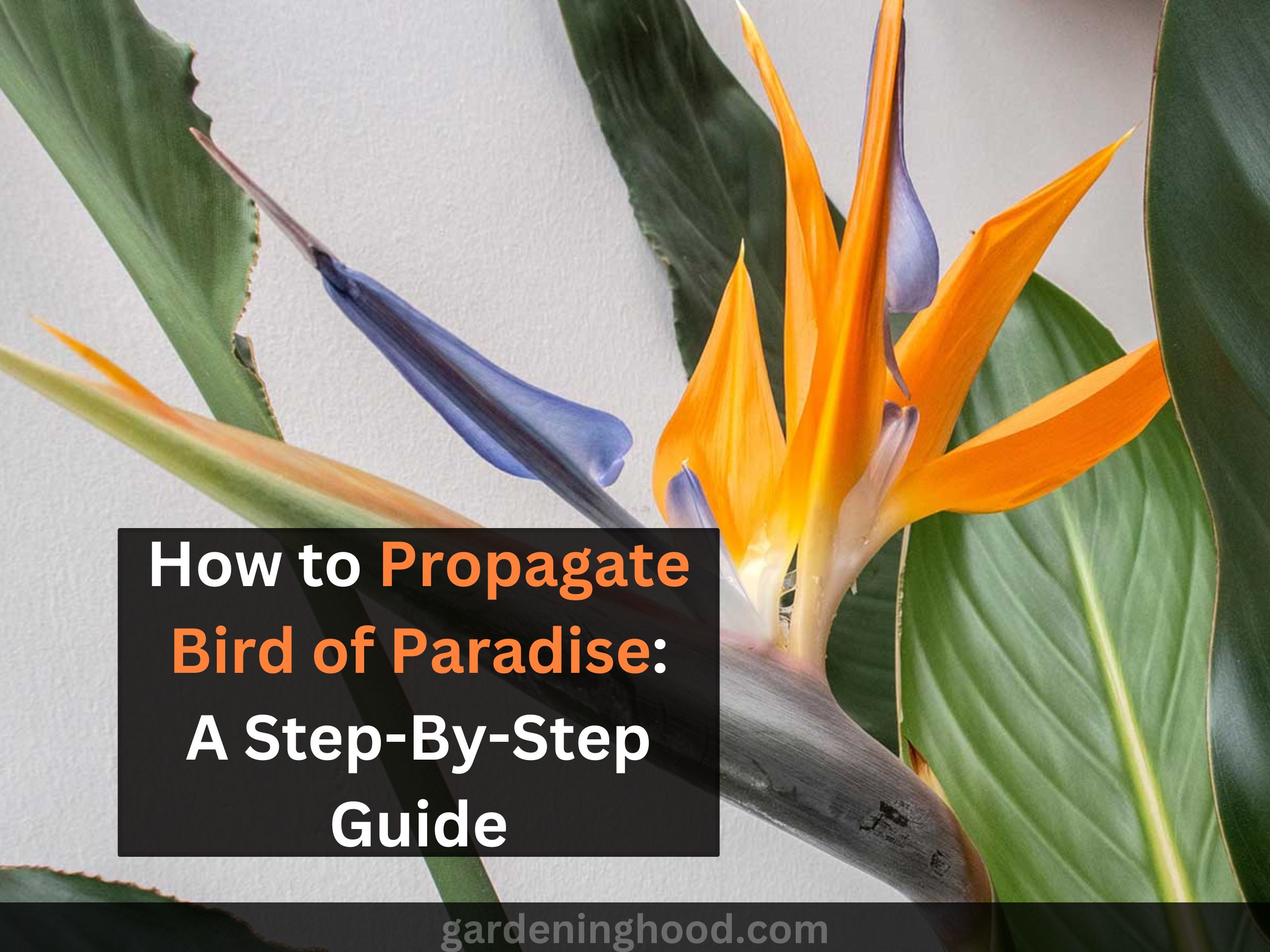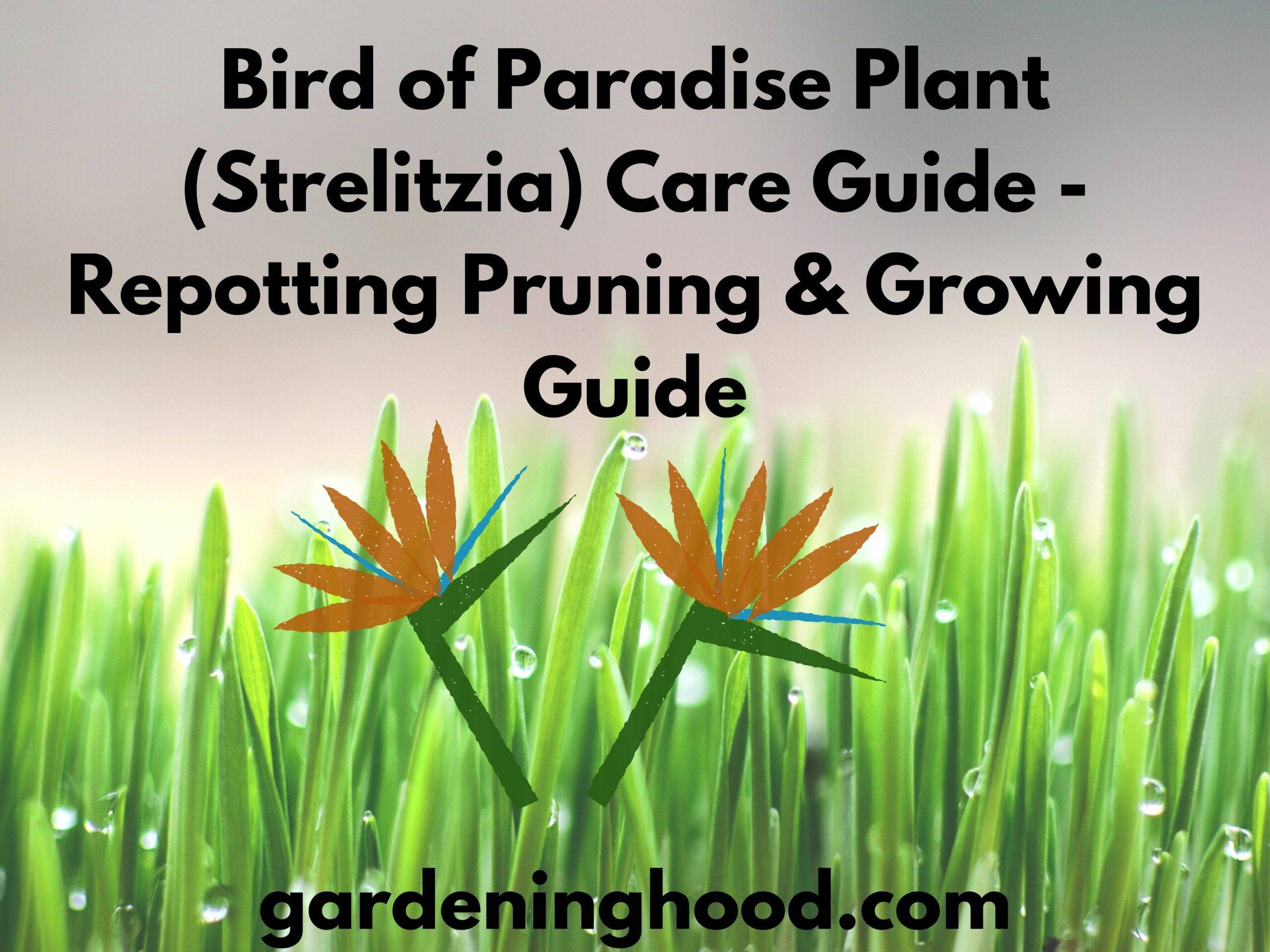Traveler’s Palm vs. Bird of Paradise – What are the Differences & Similarities?
Hey folks! Welcome back!
I hope you are doing great in your gardening field. In this article, we will be discussing a comparison of Traveler’s Palm vs. Bird of Paradise. While a traveler’s palm and a bird of paradise may initially appear to be similar, they differ in several ways. What, though, can some of those variations be, and why are these plants similar in the first place?
You’ve come to the right site if you want to discover more about the various types of tropical plants or if you want to grow either of the following two plants.
Quick takeaways:
- When compared to the Bird of Paradise, the Traveler’s Palm has leaves having straight tips.
- The Strelitzia’s leaf stalks are more rounded, but the ravenalas are more rectangular in appearance.
- The strelitzia leaves are significantly more robust, whilst the ravenala leaves are weaker and more resemble Moses.
- The stems of ravenala leaves are organized to form a perfect, thin plane, but the branches of strelitzia leaves take the shape of a cylindrical trunk.
We will discuss their physical characteristics, including heights, as well as their preferred growing environments and the plant families to which they belong.
| Traveler’s palm | Bird of Paradise | |
| Common Names | Bird flower, Firebirds, Bird of Paradise | Bird flower, Fire birds, Bird of Paradise |
| Latin name(s) | Ravenala madagascariensis | Strelitzia |
| Family | Strelitziaceae | Strelitziaceae |
| Vegetation | Perennial | Perennial |
| Height at maturity | > 32 feet | 2 to 6 feet |
| Width at maturity | 18 to 19 feet | 6 to 9 feet |
| Soil type | Sandy soil, Stony soil, Humus | Sandy soil, Stony soil, Humus |
| Soil pH | Neutral to slightly Acid soil | Neutral |
Traveler’s Palm vs. Bird of Paradise
The traveler’s palm and the bird of paradise differ significantly in several important ways. For instance, both in height and leaf size, the traveler’s palm outgrows the bird of paradise. In comparison to a specific traveler’s palm, the bird of paradise plant may be grown in more hardy zones.
Last but not least, unlike plants that develop as grouped stems like birds of paradise, travelers’ palms grow utilizing a core trunk.
Tropical plants having resemblances to each other in appearance include the traveler’s palm and the bird of paradise. As a result, it’s difficult to tell them apart, and many are confused by it. Now let’s discuss each of these distinctions in greater depth.
1. Traveler’s Palm vs. Bird of Paradise: What Are Their Appearances?
Traveler’s Palms are almost like sculptures, and they make me think of Madagascar’s breathtaking landscape. Its large leaves are supported by long, robust, fan-shaped petioles that have a fan-like form.
Between these petioles, the plant stores water that helps travelers quench their thirst and eventually gives the plant its well-known name. Finally, petioles droop and leave the woody stem with scars resembling those of palm trees.
In landscaping, it is frequently utilized to give expensive backyards, farms, and public spaces a hint of the tropics. It develops as an alternately appearing, thin, ringed stipe made up of interconnecting petioles on a single plane.
Old leaves wither and fall off while fresh ones emerge in the center of the fan, freeing the stipe. Given that the fan has a nearly 20-foot diameter, the young trees ought to develop in the exact direction as the original plant.
Since certain birds of paradise grow to enormous sizes, they are occasionally referred to as trees. The plant resembles a tree because of its trunk. It is composed of densely packed leaves with thick petioles. As a result, the bird of paradise is also known as the false traveler’s palm.
As they age, they lose moisture and fall off. All that’s left are scars, making it look like a palm tree. You could confuse the traveler’s tree because of this. By the way, those are herbal false palms. Some strelitzia leaves don’t have a slit in the center, unlike traveler’s palms, and instead, have a solid edge.
2. Traveler’s Palm vs. Bird of Paradise: What Are Their Hardiness Zones?
For several reasons, both the traveler’s palm and the bird of paradise plant are regarded as tropical plants. Both of them can only grow in a few hardiness zones.
The traveler’s palm, however, has more particular needs than plants that grow birds of paradise.
Bird of Paradise plants, on the other hand, may grow everywhere between zones 9 and 12, including indoors, whilst travelers’ palms can only be grown in zones 10 to 11.
3. Traveler’s Palm vs. Bird of Paradise: What Are Their Heights?
Each leaf is around 10 feet long and includes a stalk that is nearly as long as the leaf, giving it the look of a paddle. The fan’s blade emphasizes its feathery appearance by resembling a banana tree that has been torn apart by the wind.
The most well-known species of birds of paradise, Strelitzia reginae, is distinguished by its long, dark green leaves that have a fan-like appearance and emerge from the root neck on long petioles.
Although they are significantly denser, they resemble banana leaves in appearance. The stems are between 20 and 35 inches long, and the leaves are between 11 and 75 inches long.
4. Traveler’s Palm vs. Bird of Paradise: What Are Their distinctive qualities?
The birds of paradise and travelers’ palm trees each have distinctive naming origins and historical details. For instance, the bird of paradise plant does have a variation that is frequently called the wild banana plant due to its resemblance to the banana plant.
Due to the manner it grows, the traveler’s palm has earned its name. Travelers can determine which way to go because the leaves only develop along an East-West axis. Additionally, it is said to have earned this name from the fact that any weary travelers trying to get to their goal may find some comfort in the water that collects on the leaves of this plant.
5. Traveler’s Palm vs Bird of Paradise: What about their Flowers and Fruits?
Travelers palm is one of the plants that bloom at the time of fall, and its fruits come in brown colors that attract the birds. When the plant reaches a height of 9 feet, then it begins to flower. It produces Greenish colored bracts and flowers.
Whereas, on the other side, the bird of Paradise produces orange-colored sepals and blue-colored petals that are brought together and form amazing flowers. Its flower resembles the head of a tropical bird that looks amazing.
Is a bird of paradise a palm?
No, the bird of paradise is not a palm. Both of them are two different plants that have different characteristics. They also belong to different families. On the one hand, palm is the part of the Arecaceae family whereas on the other hand bird of paradise is the part of Strelitziaceae family.
You can easily differentiate between the two by observing its flowers. In simple words, you can recognize them by seeing their flowers. The flowers of the palm tree are small and are green- yellowish in texture.
Whereas the flowers of the Bird of Paradise are somehow bright as compared to that of the palm. They are easily recognizable flowers in the shades of orange, yellow, blue, and red that emerge from a green bract. Its amazing texture pictures a bird of blight.
Wrapping up the context
So we’ve covered the topic of Traveler’s Palm vs. Bird of Paradise and their similarities & differences. The traveler’s palm and the bird of paradise differ significantly in several important ways. For instance, both in height and leaf size, the traveler’s palm outgrows the bird of paradise.
In comparison to a specific traveler’s palm, the bird of paradise plant may be grown in more hardy zones. We hope you find this article helpful. Stay tuned for future articles. Let’s know how much you like these articles and share them with loved ones who love gardening.
Thanks for reading! Happy Gardening!


